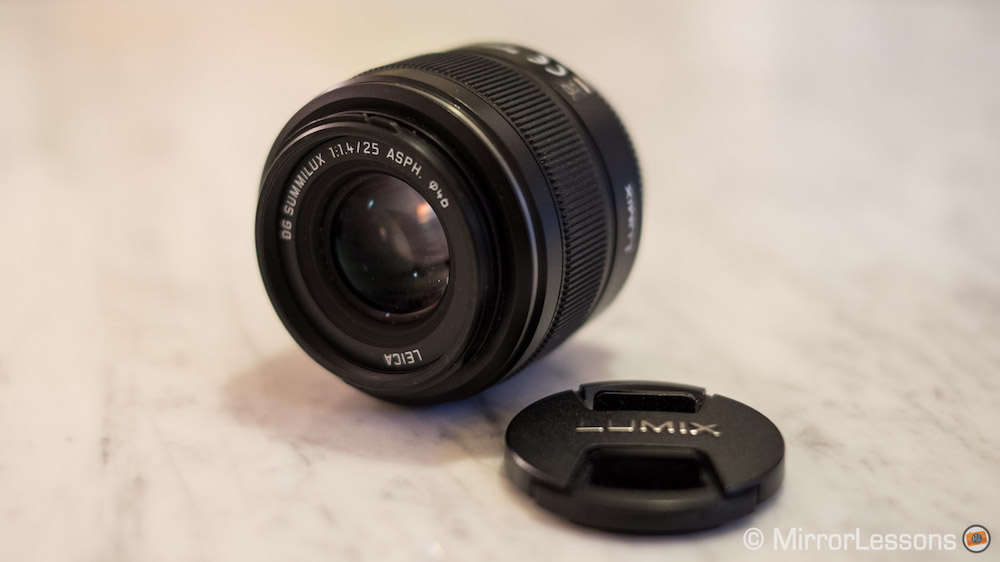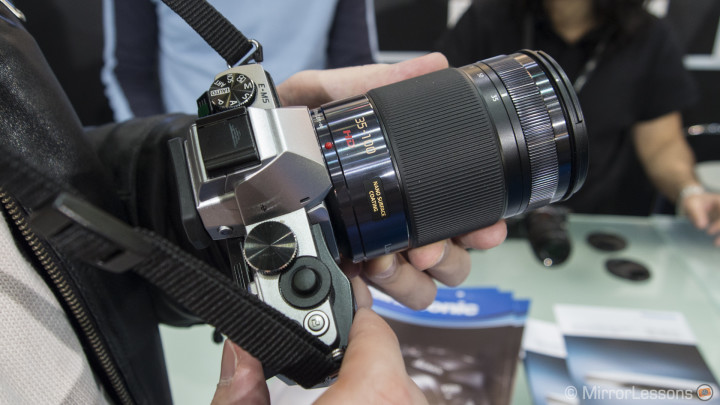When most people buy their first Micro Four Thirds camera – or any digital camera for that matter – they normally begin by using the kit zoom included in the box. Once you become serious about a specific genre however, the kit zoom on its own is no longer enough due to the generally inferior optical quality and slower aperture range.
Portrait photography is one of those genres for which kit lenses aren’t particularly well-suited. Although some might be sufficiently long on the telephoto end, zooming in will automatically cause the lens to stop itself down to f/5.6 or f/6.3. These slow values are not enough to achieve that smooth and creamy background blur portrait photographers crave.
So what’s a good alternative to the kit lens if you own a Micro Four Thirds camera and want to get into portrait photography? Well, the best choice is a prime lens with a fast aperture (f/1.8, f/1.4 or even faster). The larger aperture will give you more room to play with shallow depth of field in comparison to any zoom.
Then there is the focal length to consider. We often refer to portrait lenses by using the 35mm format (or full-frame) equivalent, and in this case the most popular choices for portraits include 85mm, 100/105mm or even 135mm and 200mm lenses. To have the same field of view on Micro Four Thirds, you need to halve the focal length (so for example, 100mm on full frame = 50mm on m4/3).
For this article, we’ve selected three categories for your Panasonic or Olympus camera:
- 42.5mm or similar: a short telephoto lens for your classic head-and-shoulder shots. This combination is also good for full-body shots and produces good subject separation.
- 60mm or similar: a mid-telephoto lens for head-shots or outdoor work in large spaces.
- 25mm or similar: a normal/standard lens for full-body shots, environmental portraits or when working in tight spaces.
Other aspects you’ll want to pay attention to are the number of aperture blades (the more blades, the rounder the aperture) and the sharpness (something sharp but not too sharp as you don’t want to emphasise imperfections of the skin).
A final factor to consider is that while Panasonic and Olympus lenses are fully cross-compatible, some older Olympus lenses are slower on Panasonic bodies with the DFD autofocus system and can occasionally mis-focus.
With all these characteristics in mind, here is our list of all the best Micro Four Thirds portrait options you can find as of late 2018. We consider this article “dynamic” in that we plan to update it as new lenses are released. As always, if there is a lens you would recommend that we’ve failed to mention here, be sure to tell us about it in the comments section at the end of this article.
Ethics statement: All opinions expressed in this article are based on our real-world experience with each lens unless otherwise stated. We were not asked to write anything about these products, nor were we provided any compensation of any kind. Within the article, there are affiliate links. If you decide to buy something after clicking the link, we will receive a small commission. To know more about our ethics, you can visit our full disclosure page. Thank you!
[toc heading_levels=”2″]
Article updates
- February 2019: added the Sigma 56mm f1.4 Contemporary as one of the best options in the mid-telephoto selection
The Best Short Telephoto Lenses for Portraits
Short telephoto lenses tend to be most versatile of the three because you can use them for all kinds of portraits from tighter shots of the head and shoulders to full-body shots, both inside the studio and outside.
They also allows you to maintain a comfortable working distance between yourself and your subject, unlike the standard lens which sometimes requires you to enter the subject’s personal space, or the mid-telephoto whose long focal length can disconnect you from your subject.
The most common type of short telephoto lens is the 85mm, which equates to 42.5mm in Micro Four Thirds terms. 100mm and 105mm equivalent lenses are popular choices as well.
The very best, part 1: Olympus M.Zuiko 45mm f/1.2 PRO

Olympus has delivered many winners in its professional lens category and the M.Zuiko 45mm f/1.2 PRO is a striking example. With a 90mm equivalent field of view, it is just a little longer than the standard 85mm but remains perfectly suited to all portrait genres.
It is razor-sharp straight out of the gate and peak performance is already found at f/1.8. You can work at the fastest apertures, knowing you are already getting the best results in terms of sharpness. The aperture has 9 circular blades and the bokeh is among the most attractive I’ve seen from a Micro Four Thirds lens. Thanks to the 1.2 aperture, you get smooth transitions and can achieve good subject separate with the right background. Vignetting is very well-contained while some mild chromatic aberration can appear at the fastest aperture. Flare resistance isn’t perfect but it isn’t a big concern either, with small polygonal shapes appearing only if you shoot directly to the sun.
The lens features a sliding focus ring that lets you jump between AF and MF on the fly, a customisable L-Fn button on the body, and an inner focusing system that is both fast and silent for stills and video work. It is very well-built and fully weather-sealed.
The downsides are what you’d expect: it is quite large for bodies smaller than the E-M5 II and is quite expensive. But as we all know, quality comes at a premium.
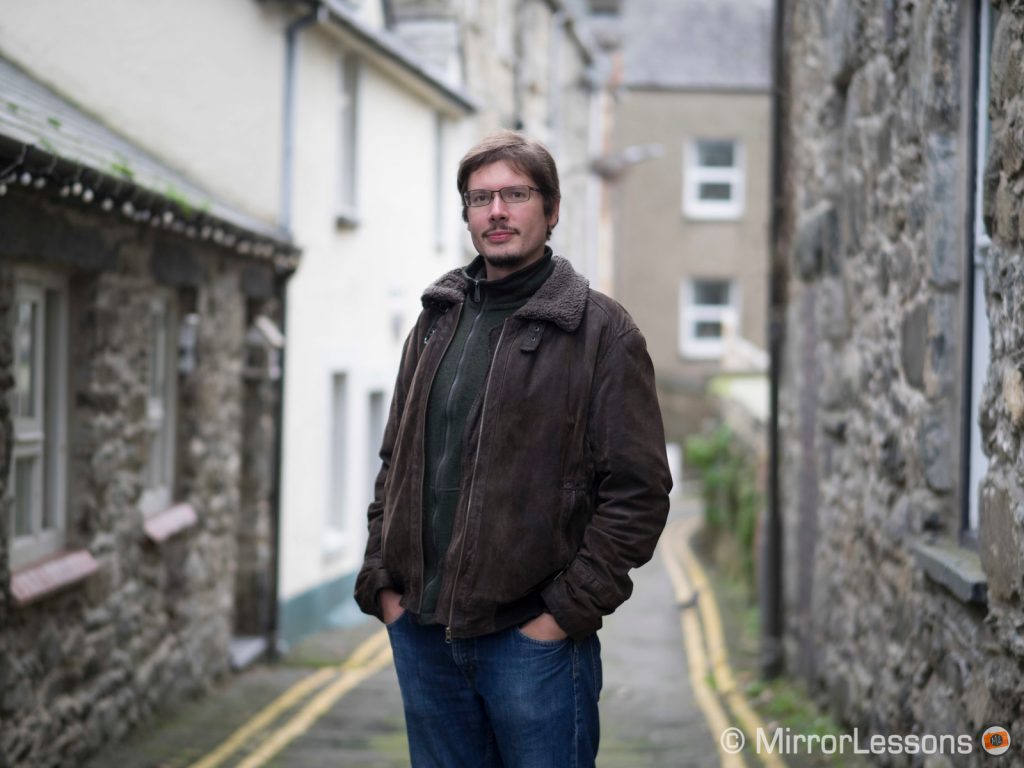
Why choose the Olympus M.Zuiko 45mm f/1.2 PRO for portraits:
- stunning performance
- bokeh is the very best you can get from a Micro Four Thirds lens
- premium build quality
To consider:
- expensive
- large for small Micro Tour Thirds bodies
Check price of the Olympus M.Zuiko 45mm f/1.2 PRO on:
Amazon | Amazon UK | B&H Photo | eBay
The very best, part 2: Panasonic Leica Nocticron 42.5mm f/1.2
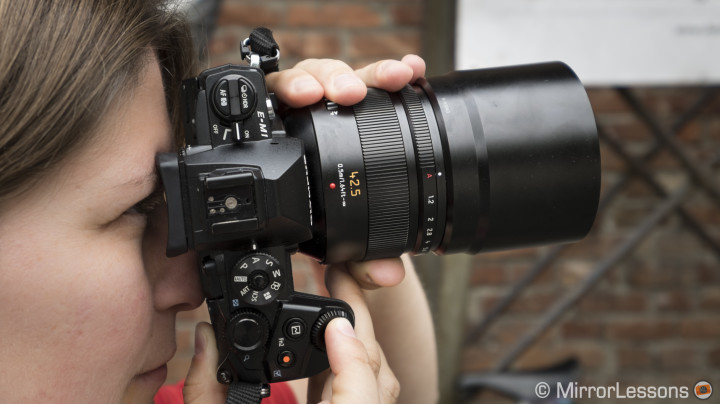
Before the M.Zuiko 45mm arrived on the scene, there was the equally wonderful Leica Nocticron 42.5mm f/1.2 whose equivalent focal length is bang on the 85mm mark.
The two lenses are actually very similar in terms of size, weight, build quality and optical performance. There are a few features that are exclusive to each lens such as the sliding focus ring and function button on the Olympus and the clicking aperture ring on the Nocticron, but nothing to merit trading in one for the other. The aperture ring on the Leica lens is very pleasant to use but it is a shame that it is ineffective on Olympus bodies.
As for the optical quality, Panasonic has set the bar very high as well. Resolution and details are excellent at f/1.2 and become impressive from f/2. Like the 45mm PRO, the Nocticron has 9 circular diaphragm blades and produces smooth and gradual transitions between the focus point and the blurred background. At the fastest aperture, the bokeh has a swirly effect while at f/2 the bokeh balls are perfectly rounded from edge to edge. Vignetting and chromatic aberration are well-contained. The only thing to be aware of is flare: the distinctive green ghost reflections can be invasive.
Another thing to consider is that the Nocticron lens is more expensive despite being an older product – probably because it incorporates optical stabilisation, which is also compatible with Dual IS on select Lumix cameras. But unless your current M43 body lacks IBIS, we don’t really see this as a big advantage.
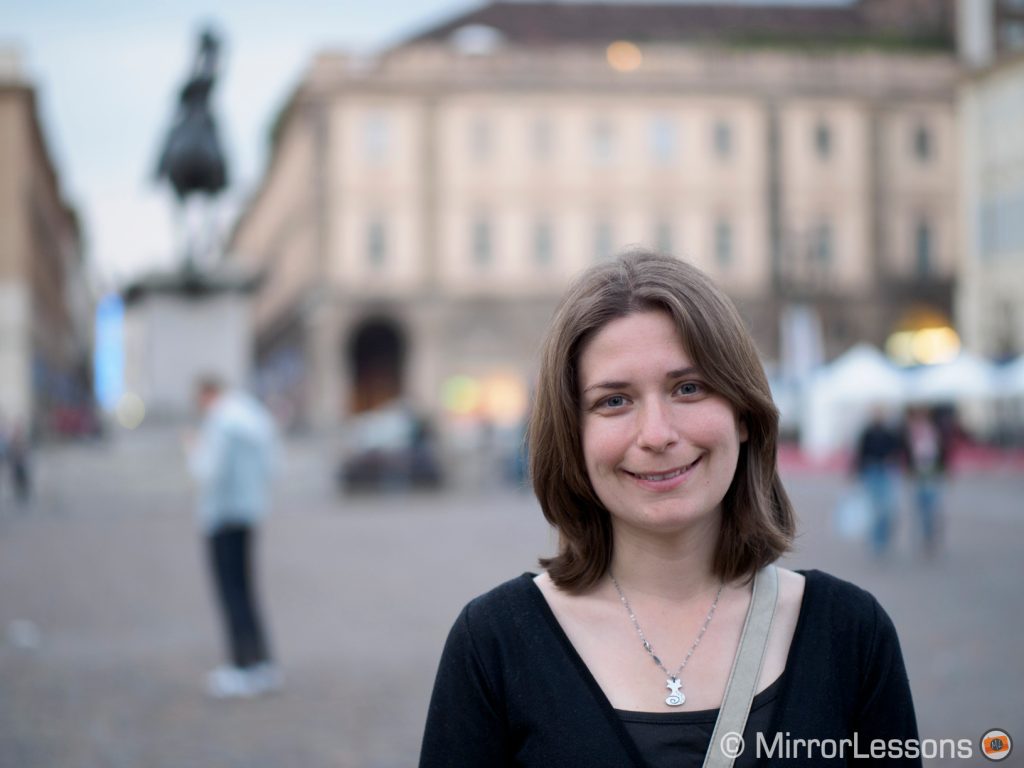
Why choose the Panasonic Leica Nocticron 42.5mm f/1.2 for portraits:
- great optical performance
- built-in optical stabilisation
- excellent metal build
To consider:
- expensive
- the clicking aperture ring only works on Panasonic bodies
- flare is more invasive than with the M.Zuiko 45mm 1.2
Check price of the Panasonic Leica Nocticron 42.5mm f/1.2 on:
Amazon | Amazon UK | B&H Photo | eBay
The fastest: Voigtländer Nokton 42.5mm f/0.95
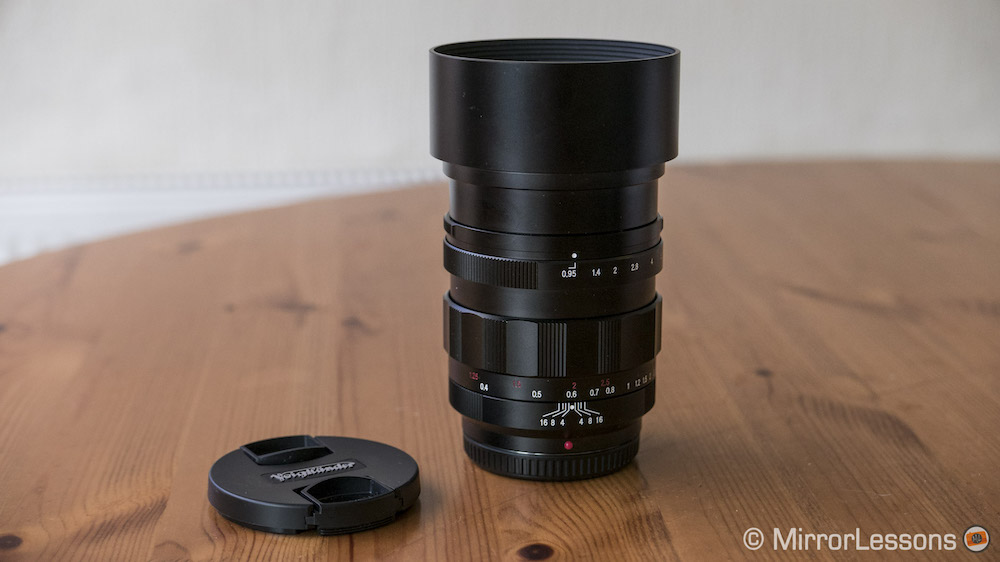
If you don’t mind manual focus lenses, the Voigtländer 42.5mm 0.95 may be just the thing you’re looking for. Like the Nocticron, the angle of view is equivalent to 85mm in full-frame terms.
It has a full metal construction complete with an aperture ring, ribbed mechanical focus ring and distance scale, and its selective aperture control system allows you to switch between a clicking and de-clicked aperture ring, making it suitable for video work. Because it lacks electronic contacts on the mount, the aperture value doesn’t get recorded in the EXIF data and turning the focus ring doesn’t trigger a manual focus assist on-screen. It is heavier than the two f/1.2 primes described above.
The Voigtländer isn’t as sharp as the Nocticron or M.Zuiko lenses but to be fair, you don’t always want razor sharp results for portrait work anyway. The 0.95 value gives your images a dreamy, ethereal look with a distinctive swirly bokeh effect that is more difficult to achieve with any of the other lenses mentioned here. Stop down to f/2 and that special look is replaced by a more uniform background and bokeh circles that the take the form of the 10 blade aperture. The minimum focus distance at 23cm is also very short, which is useful if you like to get close to your subject or reduce the depth of field to a minimum. The lens also renders a slightly warmer look than the other two lenses.
This lens produces more flare than the other lenses but it is also the most distinctive, especially the star sun effect Voigtländer lenses are known for. Vignetting and chromatic aberration are present at the fastest aperture but they disappear by f/2.8.
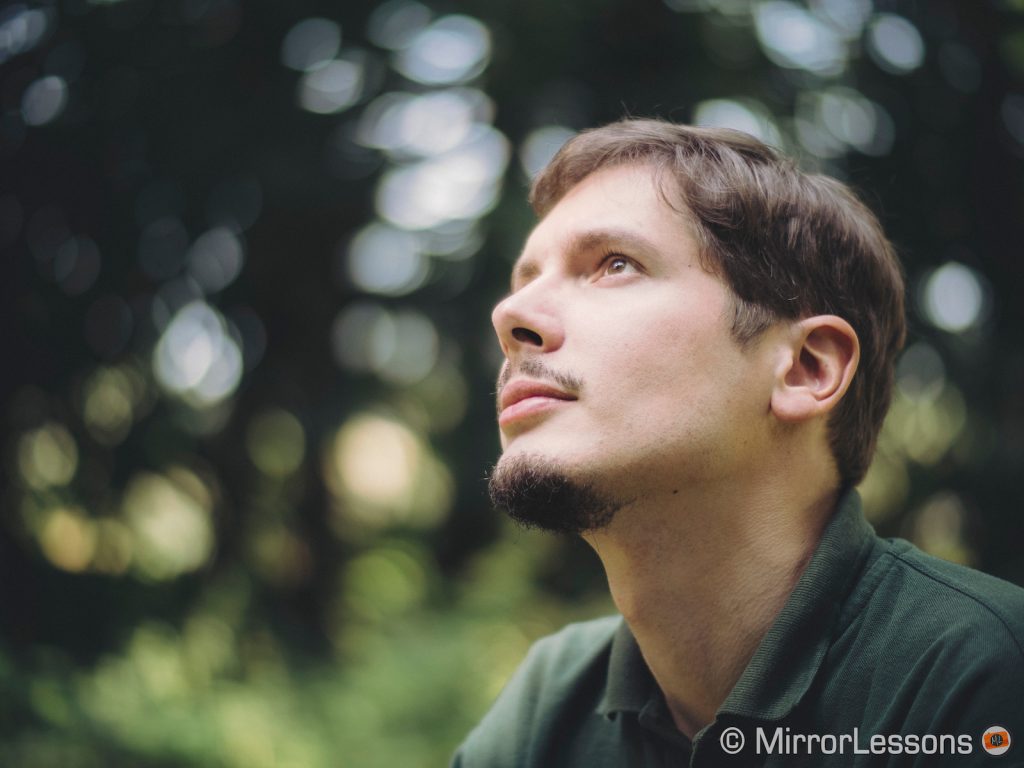
Why choose the Voigtländer Nokton 42.5mm f/0.95 for portraits:
- distinctive bokeh and a look that is different from other lenses
- more shallow depth of field to play with
- mechanical focus ring is smooth and precise
To consider:
- no electronic contacts mean no EXIF data or direct communication with the camera
- not the sharpest lens on this list, especially at f/0.95 and f/1.4
Check price of the Voigtländer Nokton 42.5mm f/0.95 on:
Amazon | Amazon UK | B&H Photo | eBay
Best deal: Panasonic Lumix 42.5mm f/1.7
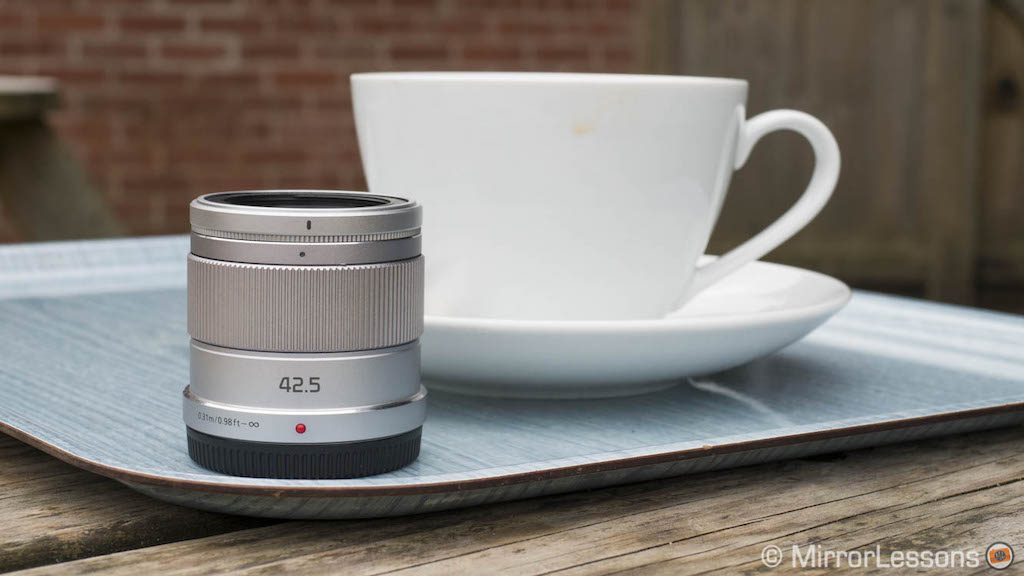
Those looking for an affordable and portable portrait lens can’t go wrong with the Lumix 42.5mm f/1.7. It is small enough to easily fit inside a coat pocket, yet delivers good sharpness through the aperture range that isn’t far off the expensive options mentioned above.
You lose that extra stop of light and the possibility to have more shallow depth of field, but there is still plenty to work with. Although the quality of the bokeh is good, it is busier than that of the 1.2 primes and features irregular shapes at the edges. The lens has a good minimum focus distance of 31cm and excellent resistance to flare. Vignetting isn’t too much of a concern at the fastest aperture and it disappears by f/4.
Unusually for a lens of this price, it has a metal build and comes with optical stabilisation which can also work with Dual IS on select Lumix cameras. The AF motor is fast and silent for both stills and video.
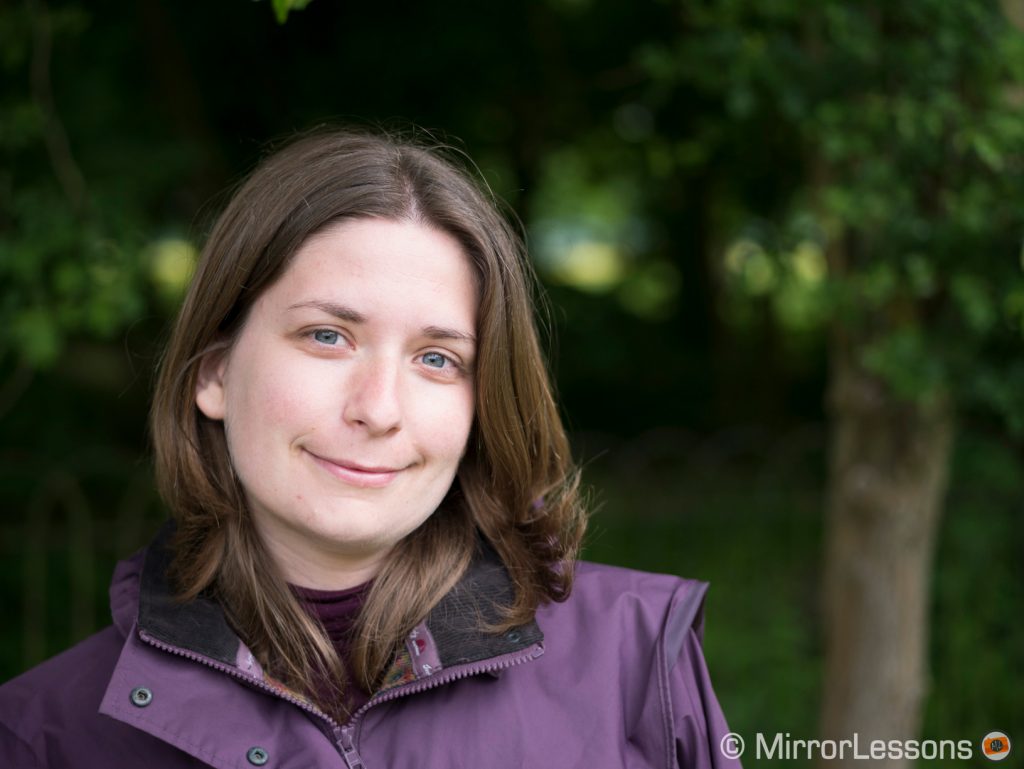
Why choose the Panasonic Lumix 42.5mm f/1.7 for portraits:
- good sharpness from f/1.7 and excellent resistance to flare
- optical stabilisation and Dual IS compatibility
- metal build
To consider:
- bokeh rendering is a little less smooth than the other lenses
Check price of the Panasonic Lumix 42.5mm f/1.7 on:
Amazon | Amazon UK | B&H Photo | eBay
Good deal: Olympus M.Zuiko 45mm f/1.8
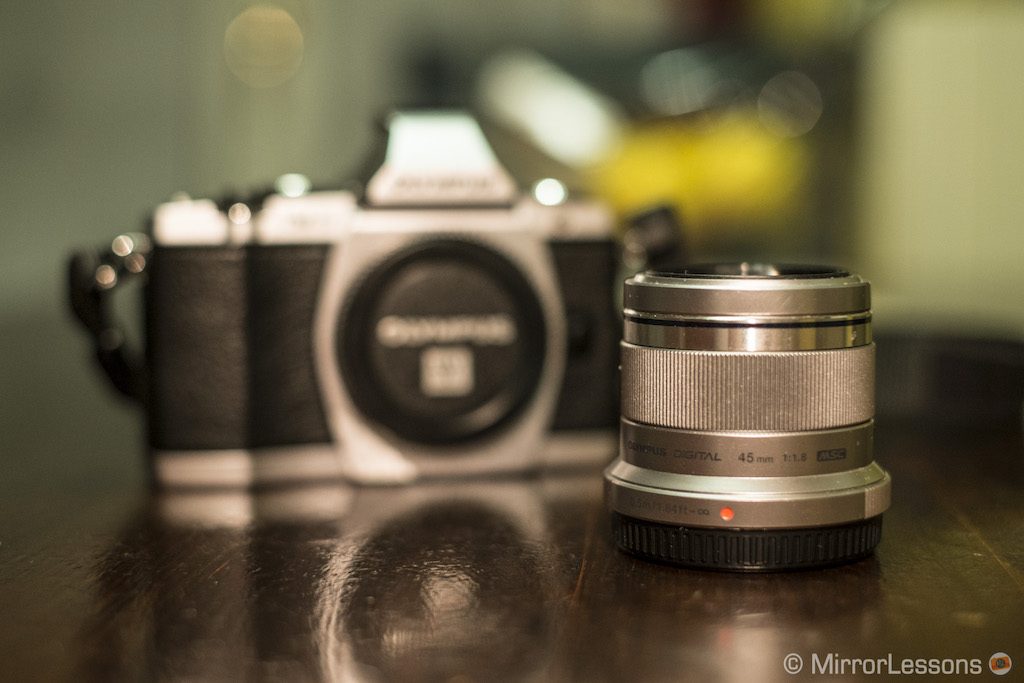
The M.Zuiko 45mm was one of the first Micro Four Thirds lenses and remains a favourite amongst those who want a small and capable portrait lens without spending a fortune.
Unlike the Lumix, it is mostly made of plastic and doesn’t feature any optical stabilisation but as long as you use it on a stabilised body, you’ll be absolutely fine. It doesn’t come with a lens hood but you can buy one separately.
Sharpness is good at f/1.8 and peaks at f/2.8. The bokeh balls have thicker edges but they are round and uniform across the frame, even when the lens is stopped down to f/2.8. Personally I find the bokeh of the 45mm a little nicer than that of the Lumix 42.5mm f/1.7. It has a slightly warmer rendering than the most recent M.Zuiko lenses, and flare can be more invasive.
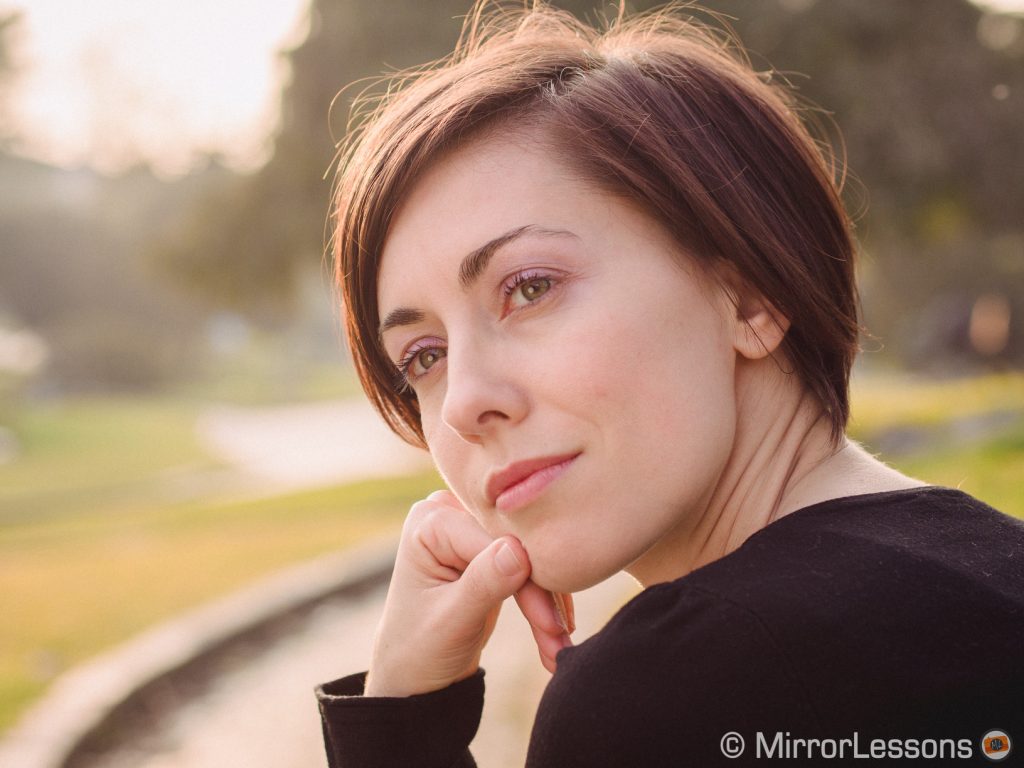
Why choose the Olympus M.Zuiko 45mm f/1.8 for portraits:
- good sharpness and nice bokeh
- one of the most affordable lenses on this list
To consider:
- plastic construction, no hood included
Check price of the Olympus M.Zuiko 45mm f/1.8 on:
Amazon | Amazon UK | B&H Photo | eBay
Fast yet affordable: ZY Optics 42.5mm f/1.2
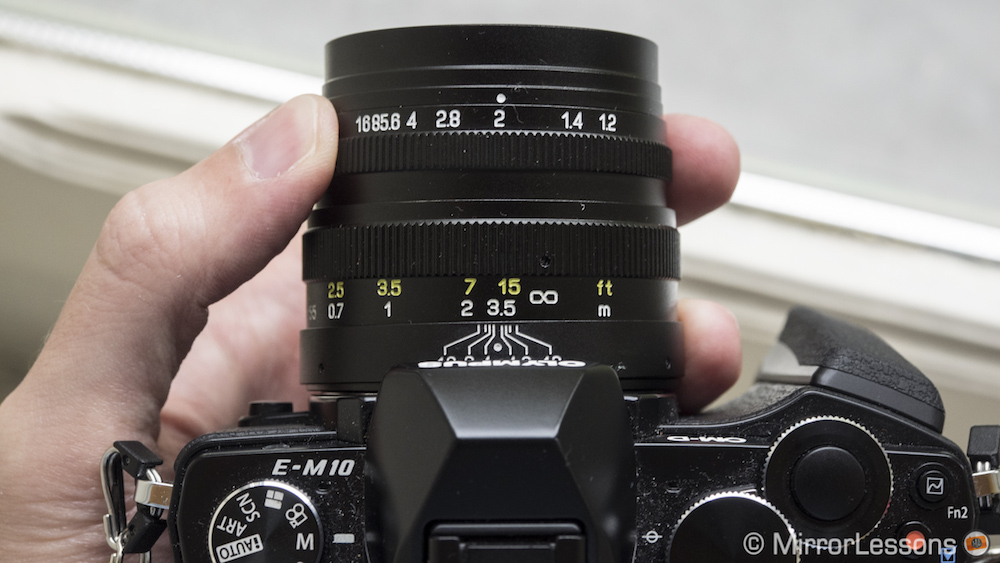
A manual focus option which I’d only recommend if you find it for cheap is the ZY Optics 42.5mm. It is small and features a good all-metal build but there are no electronic contacts so aperture data won’t be recorded. The aperture ring is de-clicked which is useful for video but less so for stills, especially in this case because the markings on the aperture ring are crammed together, making it difficult to select the right value. The hyperfocal scale is also difficult to use because it is tiny and extremely close to the mount. In fact, the built-in EVF of your camera might even cover it as you can see from the image above. The mechanical ring is nice and smooth however.
The optical performance at f/1.2 isn’t all that impressive due to its soft rendering. Just like the Voigtlander 42.5mm, this is not a lens you buy for sharpness (which does get better at f/2 by the way). The bokeh is not as ethereal as that of the Nokton, but it does have an interesting look that we appreciated when testing it. Note that that lens suffers from some chromatic aberration at the fastest apertures.
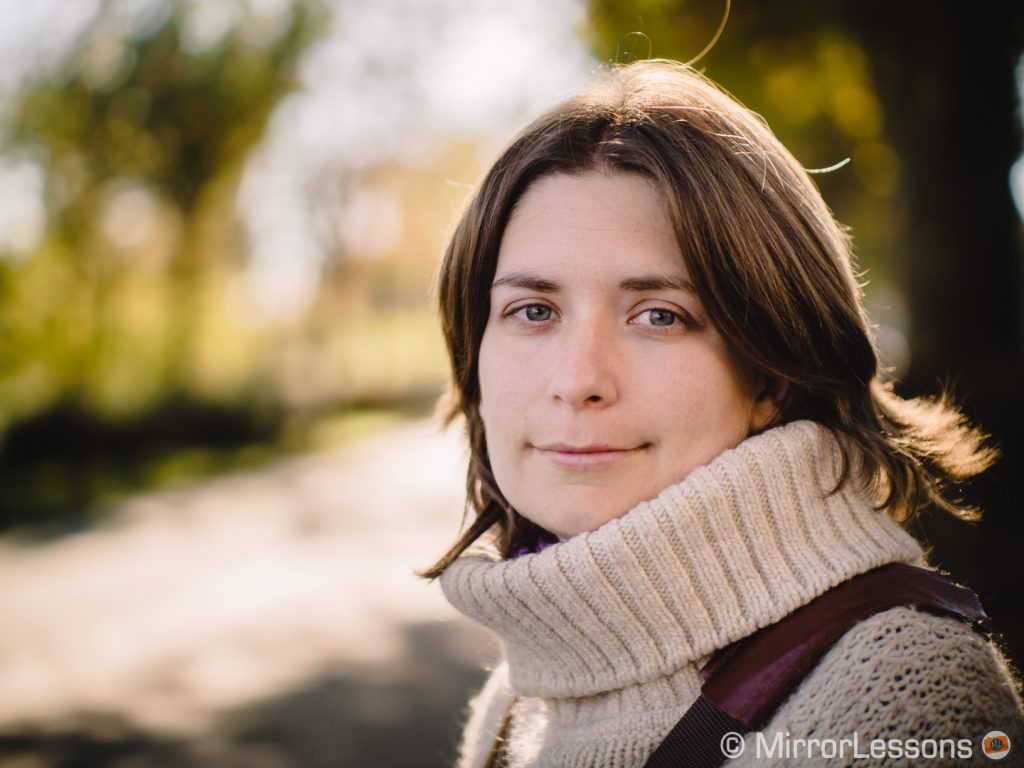
Why choose the ZY Optics 42.5mm f1.2 for portraits:
- affordable for an f/1.2 lens
- nice mechanical focus ring
- compact and lightweight
To consider:
- sharpness doesn’t improve until f/2
- click-less aperture ring whose values are crammed together
- no electronic contacts
Check price of the ZY Optics 42.5mm f1.2 on:
Fast yet affordable: Samyang 50mm f/1.2 AS UM C CS
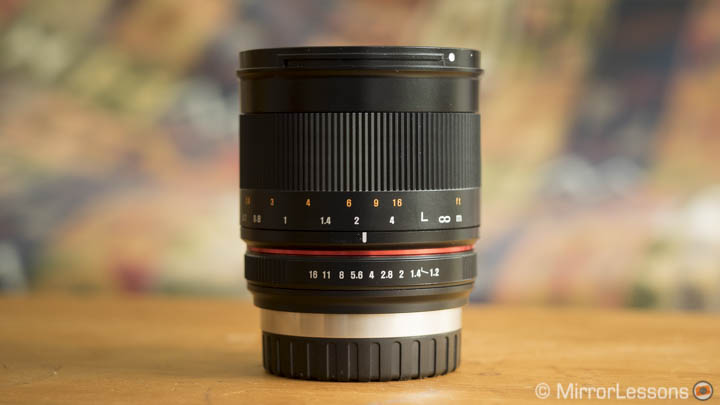
We tested this particular lens for the Fujifilm XF mount but it is also available for Micro Four Thirds and other mirrorless systems. With an equivalent field of view of 100mm, the Samyang 50mm f/1.2 is longer than the other lenses listed above but still works well as a portrait lens. Its fastest value of 1.2 makes it an interesting choice especially if you like swirly bokehs with cat’s eye shapes. At f/1.4 it becomes more uniform and the bokeh balls are circular up to f/2.8, though their texture isn’t as smooth (lots of onion rings). It’s a shame that sharpness isn’t particularly good at f/1.2 and only improves marginally at f/1.4 and f/2. You need to stop down to f/4 for it to peak. Sharpness is worse when focusing at long distances.
The lens is fairly light. The barrel is covered in plastic but the bottom part and the mount are made of metal. The aperture ring moves in 1/2Ev steps rather than 1/3 which means it can be less precise for fine-tuning exposure, especially if you like to make videos. The mechanical focus ring is very pleasant to use however.
Note that this lens only offers manual focusing and doesn’t have electronic contacts on the mount so none of the EXIF data is saved. Like Zy Optics 42.5mm, we’d only recommend this lens if you happen to find it for a really good price. Otherwise it makes more sense to go with either the Lumix or M.Zuiko options.
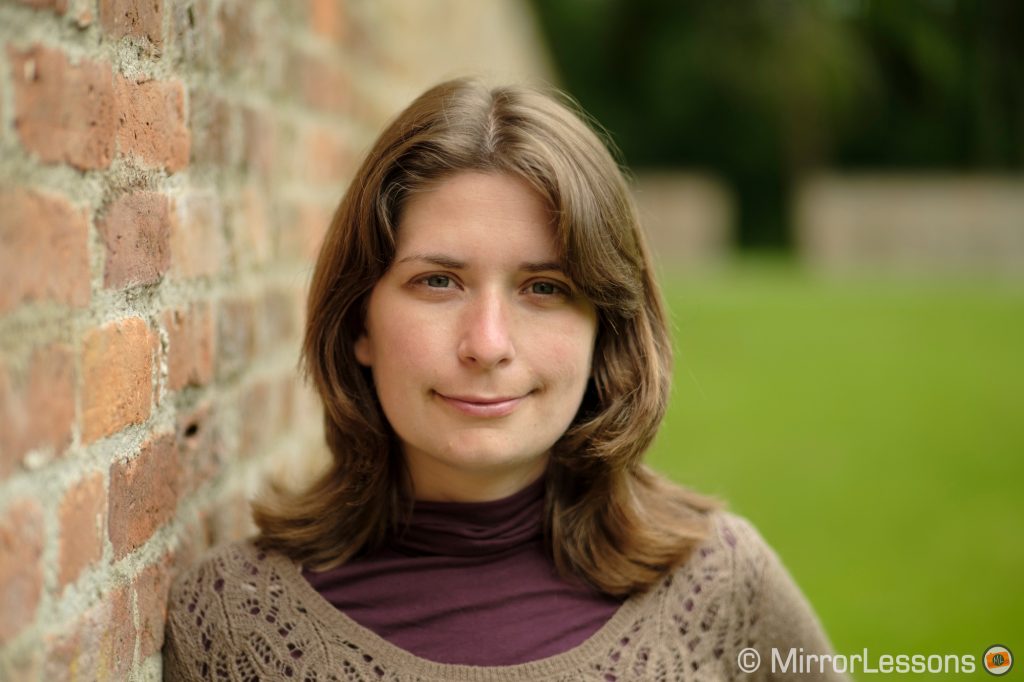
Why choose the Samyang 50mm f/1.2 AS UM C CS for portraits:
- nice bokeh rendering at the fastest apertures
- decent sharpness at close focus distances
- good mechanical focus ring
To consider:
- peak sharpness found at f/4
- no electronic contacts
Check price of the Samyang 50mm f/1.2 AS UM C CS on:
Amazon | Amazon UK | B&H Photo | eBay
The Best Mid-Telephoto Lenses for Portraits
Portrait photographers who work on location love telephoto lenses with a longer focal length because they can position themselves at whatever distance they find comfortable and always end up with a beautiful background blur. If you plan to use them in the studio however, it is best to stick to head shots since you won’t have much space to move around.
Within the Micro Four Thirds catalogue, there are a few lenses that qualify as mid-telephoto portrait lenses as we’ll find out below.
The best, part I: Sigma 56mm f/1.4 DC DN C
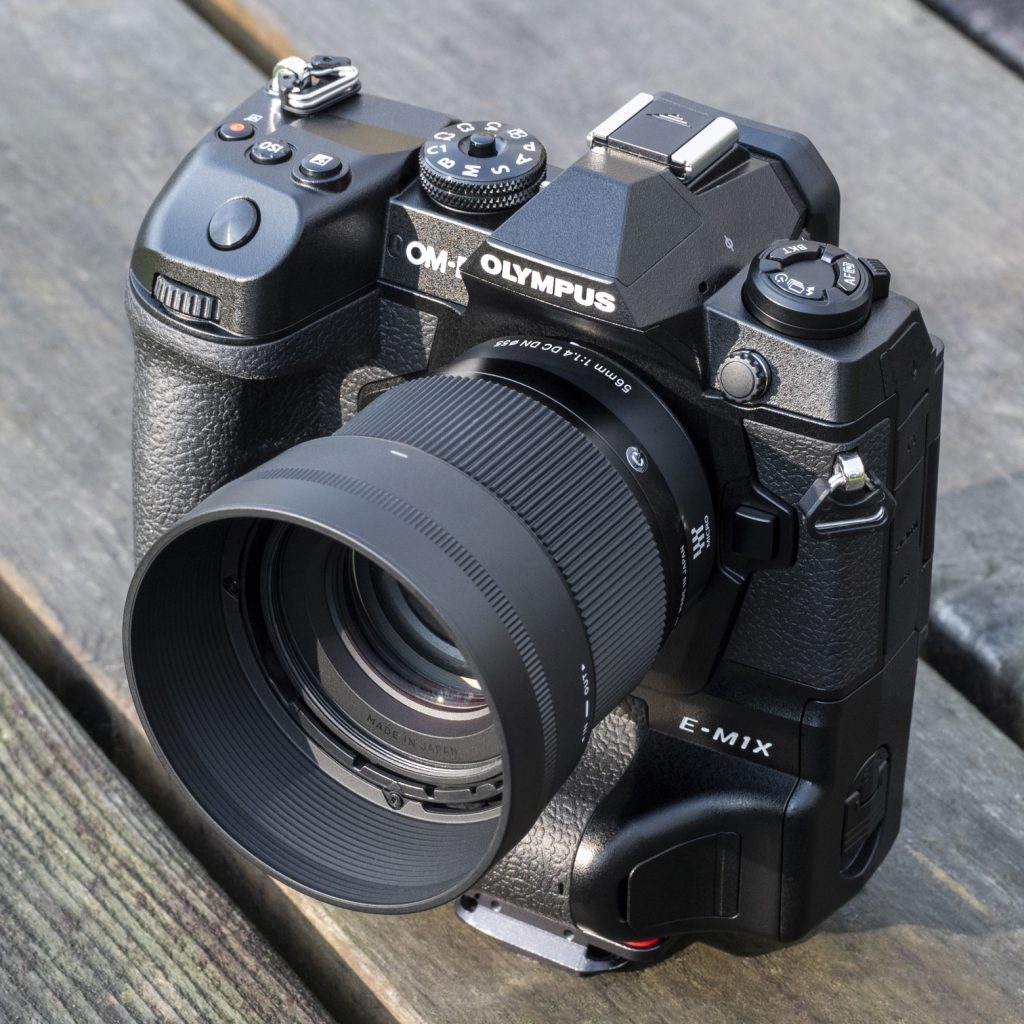
The Sigma 56mm f/1.4 is a relatively new addition to the Micro Four Thirds catalogue but it is already winning over the hearts and minds of portrait photographers. With its equivalent field of view of 112mm in 35mm terms, it is the ideal focal length for both headshots and upper body shots, and its fast 1.4 aperture allows you to blur the background nicely.
One thing that struck me as soon as I began using the lens is just how sharp it is, even when used wide open. In fact, the results at 1.4 aren’t so different to 2.8, which is a real feat.
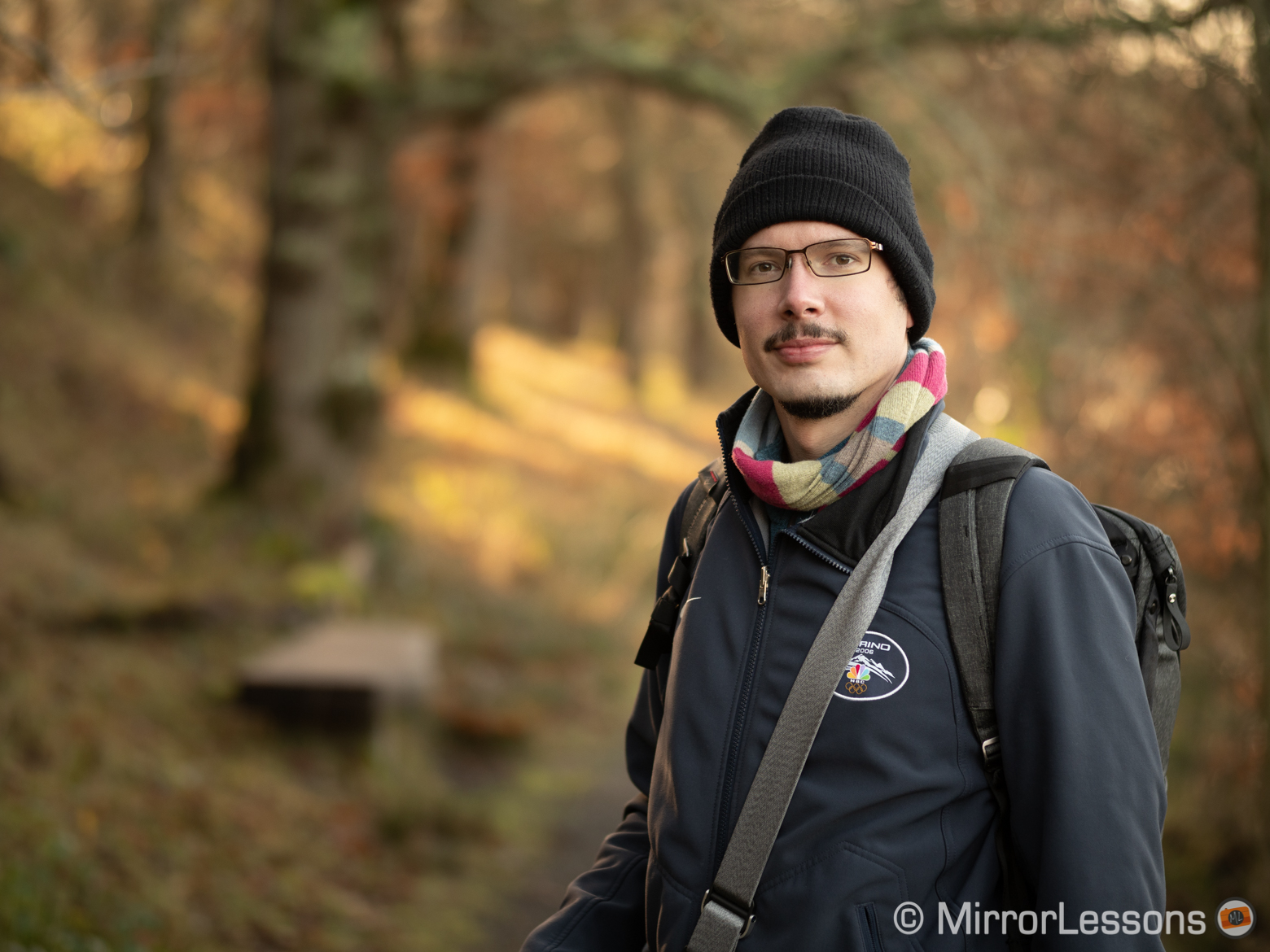
The autofocus mechanism is fast – but not quite as fast as Olympus/Panasonic lenses – and deadly silent for both stills and video recording. Manual focusing is also very enjoyable thanks to the large rubbed focus ring with its deep grooves. The mount is dust and moisture resistant, though to be honest, we didn’t test this beyond taking it out in a very light rain shower.
Why choose the Sigma 56mm f/1.4 for portraits:
- one of the sharpest lenses we’ve tested for Micro Four Thirds
- beautiful bokeh and good subject separation
- very affordable considering the specifications on offer
To consider:
- lens hood must be bought separately
- the longer focal length can be limiting indoors
Check price of the Sigma 56mm f/1.4 on:
Amazon | Amazon UK | B&H Photo
The best, part II: Olympus M.Zuiko 75mm f/1.8
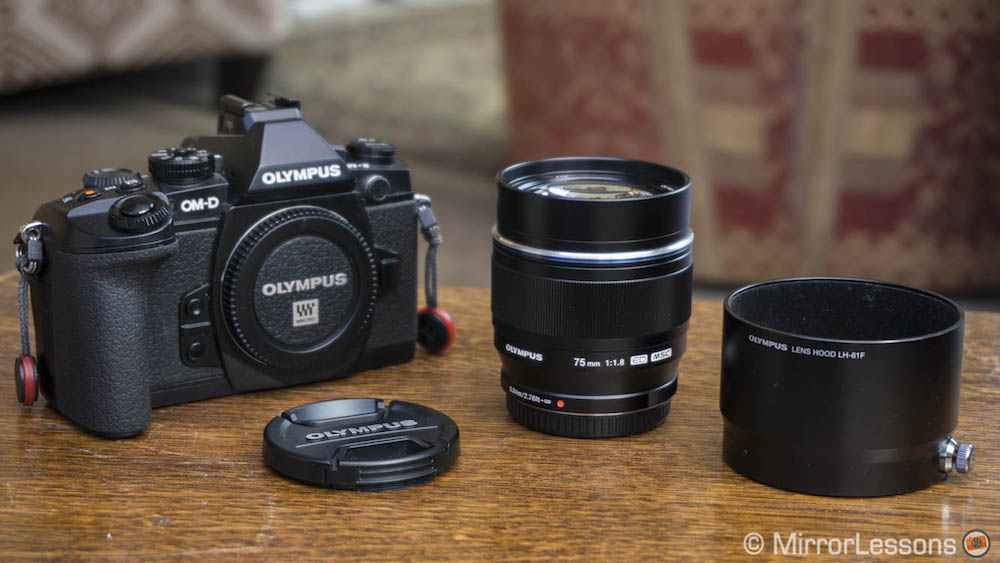
This telephoto lens has been part of our collection for many years and always seems to find a place inside our bag whenever we shoot with our Micro Four Thirds gear. In fact, Mathieu found himself using it much more than the versatile Lumix 35-100mm f/2.8 when he was employed as an event photographer in Turin.
https://www.instagram.com/p/BpWnh7Hge2Q/?utm_source=ig_web_button_share_sheet
It has a premium build with an all-metal chassis and is relatively compact, portable and light for this kind of lens. Note however that it lacks weather sealing and you have the buy the metal lens hood separately which is quite annoying.
In terms of sharpness and bokeh rendering, there isn’t much to say other than it delivers excellent results at all values and across the range. Results are very good at f/1.8 and peak at f/2.8. The bokeh is creamy and smooth thanks to the nine-blade diaphragm. The specular highlights are nicely rounded with very little colour fringing.
As you can imagine, it works very well in large spaces but if you are in a small studio or restricted environment, the 150mm equivalent focal length makes it difficult to place enough distance between yourself and your subject unless you are doing head shots.
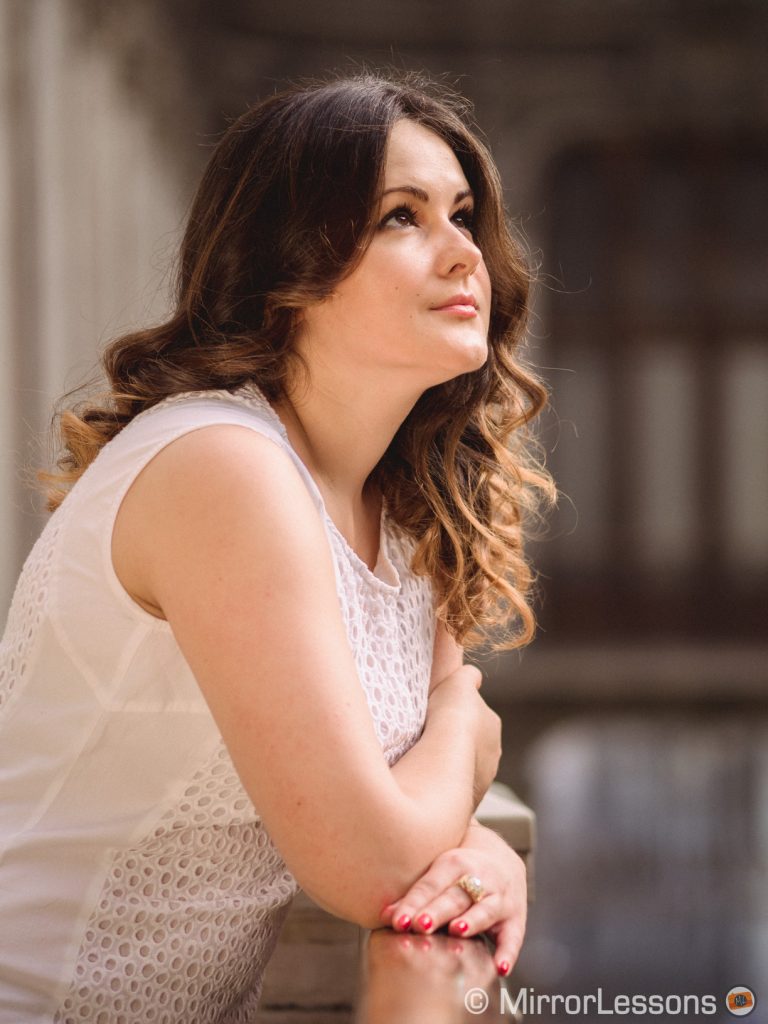
Why choose the Olympus M.Zuiko 75mm f/1.8 for portraits:
- amongst the best optical quality in the Micro Four Thirds line-up
- great bokeh and subject separation
- good metal build
To consider:
- lens hood must be bought separately
- the longer focal length can be limiting indoors
Check price of the Olympus M.Zuiko 75mm f/1.8 on:
Amazon | Amazon UK | B&H Photo | eBay
The bargain: Sigma 60mm f/2.8 DC DN
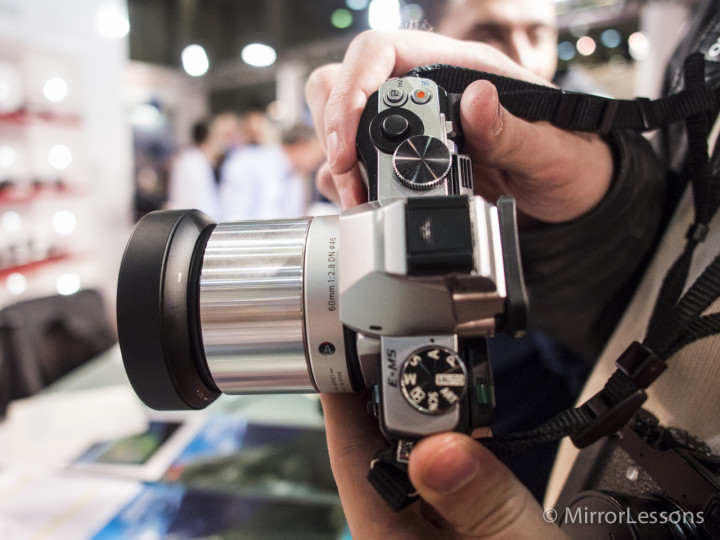
The Sigma 60mm may not have a very fast maximum aperture but it is still a good option if you mostly care about portability and price. Its only physical feature is a smooth manual focus ring which occupies most of the barrel. We personally tested the Sony E version but it is also available for the Micro Four Thirds mount (120mm equivalent field of view).
Sharpness is excellent at all aperture values across the frame and it delivers very good results at f/2.8, which is the aperture you will tend to use when shooting portraits. The bokeh can be pleasant against the right background and at the right distance, with rounded bokeh balls at the centre and slightly more oval shapes at the borders. Flare resistance is good but some polygon reflections can appear in direct light. Vignetting is contained and chromatic aberration is never an issue. The AF motor is good, albeit not the fastest.

Why choose the Sigma 60mm f/2.8 DC DN for portraits:
- excellent sharpness
- relatively inexpensive
- very portable
To consider:
- not a very fast aperture for a portrait lens
Check price of the Sigma 60mm f/2.8 DC DN on:
Amazon | Amazon UK | B&H Photo | eBay
The “macro” option: Olympus M.Zuiko 60mm f/2.8 Macro
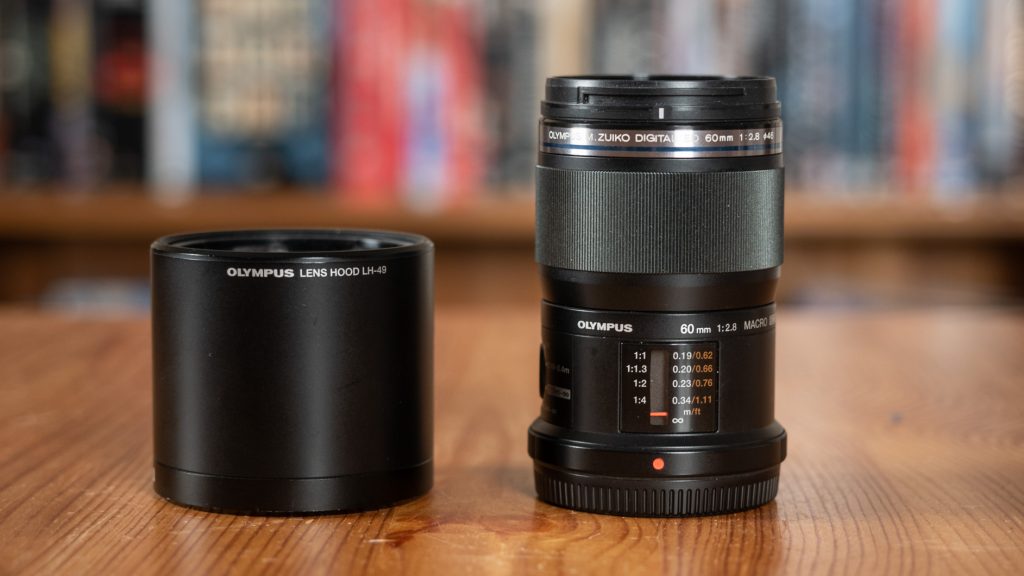
If you happen to like macro photography but also want to dabble in portraiture, the M.Zuiko 60mm is a worthwhile contender. The equivalent field of view of 120mm is perfect for headshots and despite not having a very fast aperture, you can achieve good subject separation and a nice background blur thanks to the long focal length.
This lens isn’t as affordable as the Sigma but if your main interest is macro and you only occasionally take portraits, it is probably the best solution. Just be aware that like most macro lenses, the 60mm is extra sharp, so it might emphasise the imperfections in your subject’s complexion.

Why choose the Olympus M.Zuiko 60mm f/2.8 Macro for portraits:
- excellent sharpness (perhaps even too much for portraits)
- nice bokeh
To consider:
- buy it if you’re more interested in macro than portraits and you don’t want to invest in two separate lenses
Check price of the Olympus M.Zuiko 60mm f/2.8 Macro on:
Amazon | Amazon UK | B&H Photo | eBay
The Best Standard Lenses for Portraits
Another popular focal length for portrait photography is the standard 50mm (35mm format), which in Micro Four Thirds terms equals 25mm because of the smaller sensor format. Most photographers tend to use it either for full-length body shots or waist-level portraits because the wider angle can distort the model’s facial features if you get too close.
There are numerous advantages to using such a lens for portraits. Not only are they wide enough to allow you to include some of your subject’s surroundings, but they also make it easier to work in tight spaces such as a small studio. By taking advantage of the fastest aperture and choosing the right background, you can usually achieve a pleasant background blur.
The best: Olympus M.Zuiko 25mm f/1.2 PRO
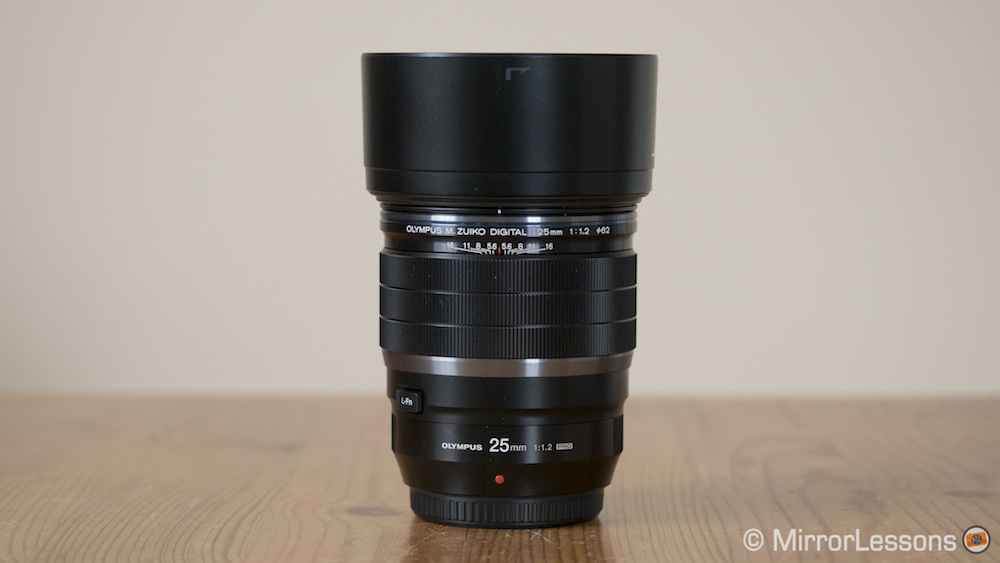
The M.Zuiko 25mm f/1.2 PRO is the most expensive 50mm equivalent lens on this list but for good reason. Released as part of Olympus’ range of PRO lenses, it has all the characteristics of a professional product, including full weather-sealing, extremely high resolution across the frame at all apertures, a precise and fast autofocus motor driven by an inner focusing system, and a stunning “feathered” bokeh that helps your subject stand out from the background. With the help of the fast 1.2 aperture, you can easily work in poor light conditions without having to raise the ISO value too high.
On the barrel you’ll find a focus ring with a handy clutch mechanism that lets you switch between autofocus and manual focus on the fly, as well as a distance scale for zone focusing and astrophotography. It lacks optical stabilisation but I don’t see this as an issue since most Micro Four Thirds bodies are stabilised these days.
We used this lens for a month while visiting Turin and found it an excellent companion, not just for portraits but for everyday photography as well. It performed particularly well at an indoor Comicon event as we were able to keep our ISO values below 800 for most of the portraits we shot. My only word of warning is that it is a little large for the smallest of Micro Four Thirds cameras.
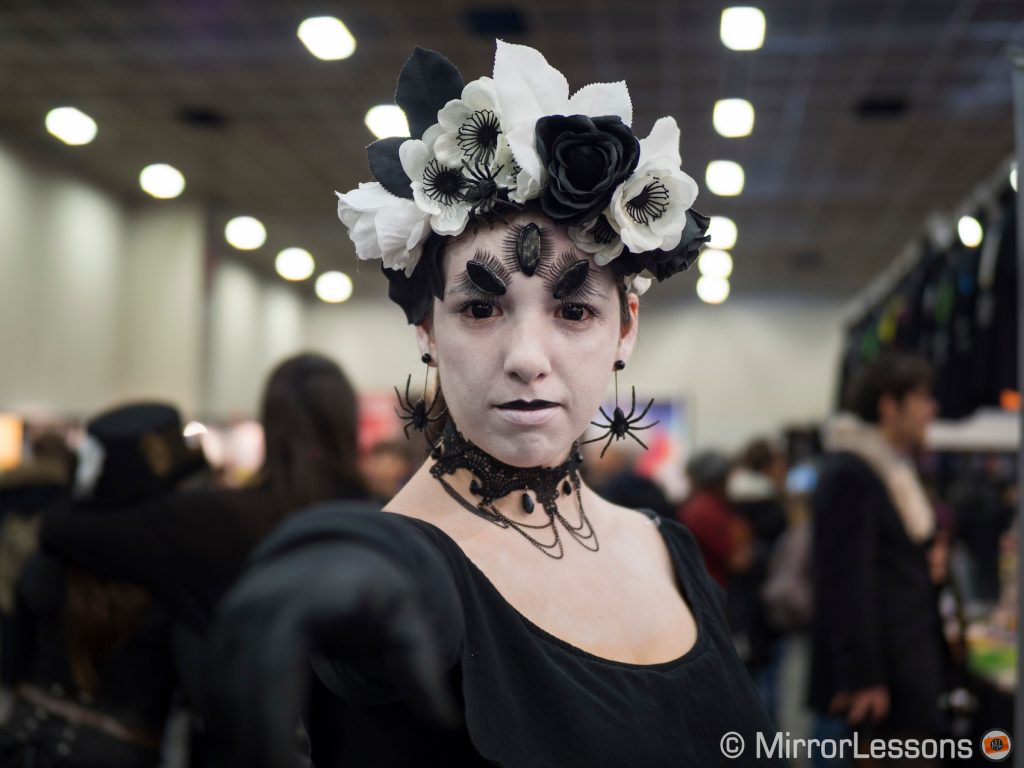
Why choose the Olympus M.Zuiko 25mm f/1.2 for portraits:
- optimal sharpness right from f/1.2
- smooth and pleasant bokeh
- excellent build quality
To consider:
- on the expensive side
- a bit large for the smaller m4/3 bodies
Check price of the Olympus M.Zuiko 25mm f/1.2 on:
Amazon | Amazon UK | B&H Photo | eBay
Still in our bag: Panasonic Leica DG Summilux 25mm f/1.4
A second high-quality lens worth considering is the Leica 25mm f/1.4. Despite being one of the older primes for the system, it delivers excellent results.
Sharpness is good at f/1.4 but you need to stop down to f/2 to get the best results, especially at short focus distances. The bokeh isn’t as smooth as the Olympus 25mm PRO’s but it has distinctive character. The subject separation capabilities of the lens are also good. Vignetting isn’t too invasive but chromatic aberration and purple fringing are two of the lens’ weak points. The AF motor works well on Panasonic and Olympus bodies but isn’t the fastest you can find given its age.
The DG 25mm isn’t weather-sealed like the Olympus version. It does have the advantage of being lighter and more compact but that is due to the plastic construction, which isn’t as robust as that of the PRO lenses. It comes with a rectangular lens hood which fits well but unfortunately cannot be reversed over the barrel for transportation due to its shape. The focus ring moves about very freely and doesn’t provide the same degree of precision as more modern lenses. It also lacks optical stabilisation, but this matters less than it used to since most Panasonic and Olympus bodies now feature in-body stabilisation.
A small quirk that we and other users have noticed is that the lens produces a rattling noise when you adjust the aperture on Olympus bodies but don’t worry – it doesn’t affect the image quality.
We bought this lens soon after we started reviewing mirrorless cameras. It is true that it has aged on many levels but the quality is still good, and that’s why we often pack it in our bags whenever we travel or photograph local events. It is also less expensive than the 25mm Pro and this is certainly one of the main reasons to consider it. That being said, you may want to look at second-hand options because the full price can still be a bit high for what it is.
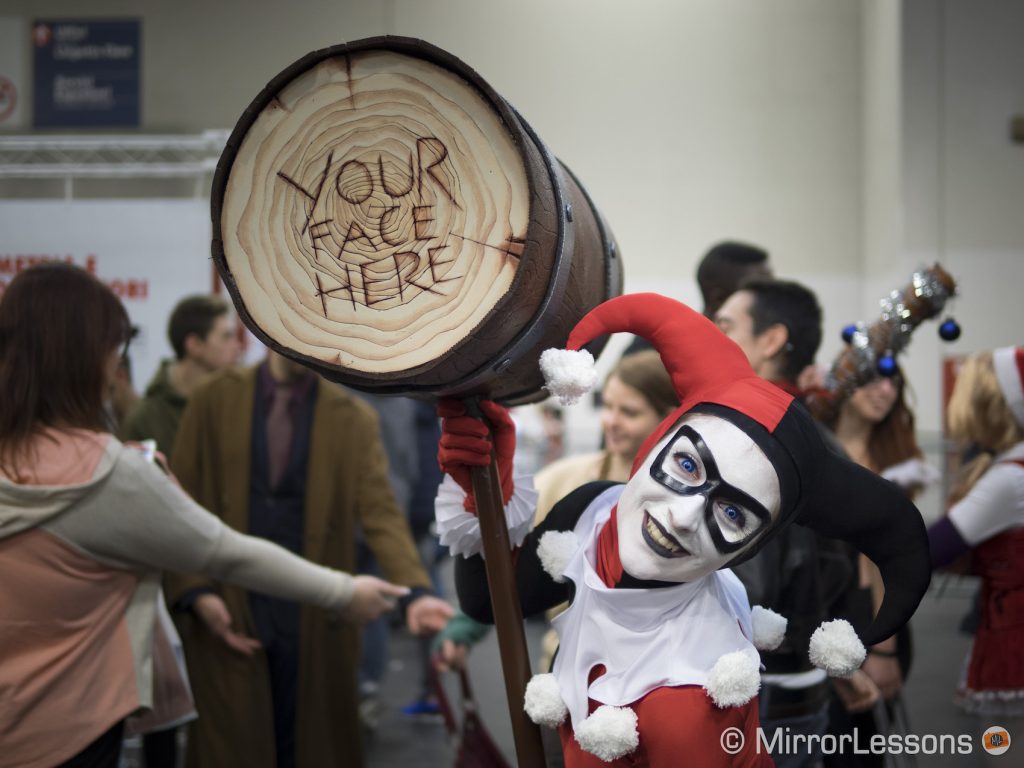
Why choose the Panasonic Leica Summilux DG 25mm f/1.4 for portraits:
- fast aperture of 1.4
- good character and bokeh
- lightweight
To consider:
- build quality isn’t the best
- focus ring lacks smoothness and precision
Check price of the Panasonic Leica DG Summilux 25mm f/1.4 on:
Amazon | Amazon UK | B&H Photo | eBay
The fastest: Voigtländer Nokton 25mm f/0.95
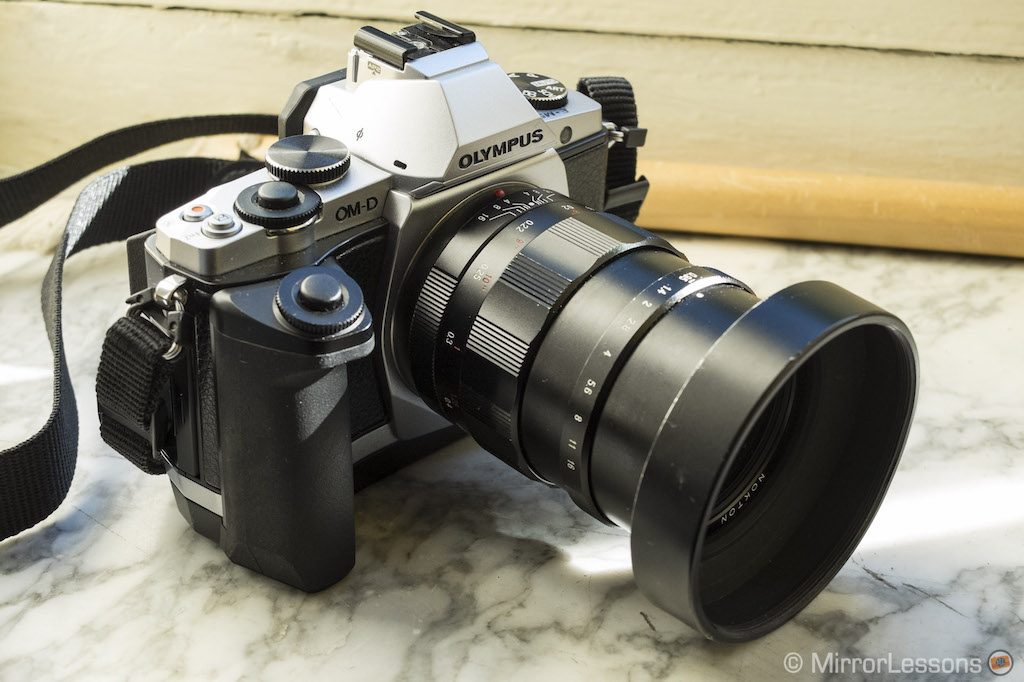
Voigtländer has a series of four lenses with a 0.95 aperture for Micro Four Thirds. We already mentioned the 42.5mm but the 25mm deserves a spot here as well for the unique look it can deliver. Note that a mark II version of the lens has replaced the original. It features an additional mechanism to de-click the aperture ring.
Just like the 42.5mm, the 25mm has a solid all-metal build but it is large and heavy when used on small Micro Four Thirds bodies. It has a smooth mechanical focus ring but the aperture ring on the old sample we tested moved about a bit too freely, causing the value to change without warning. I can’t confirm whether or not this has been improved on the mark II version.
Sharpness is not its strong point especially at the fastest apertures. The images at f/0.95 are soft with a visible lack of micro contrast and fine detail rendering. That being said, the overall look is quite pleasant thanks to the shallow depth of field and unique bokeh.
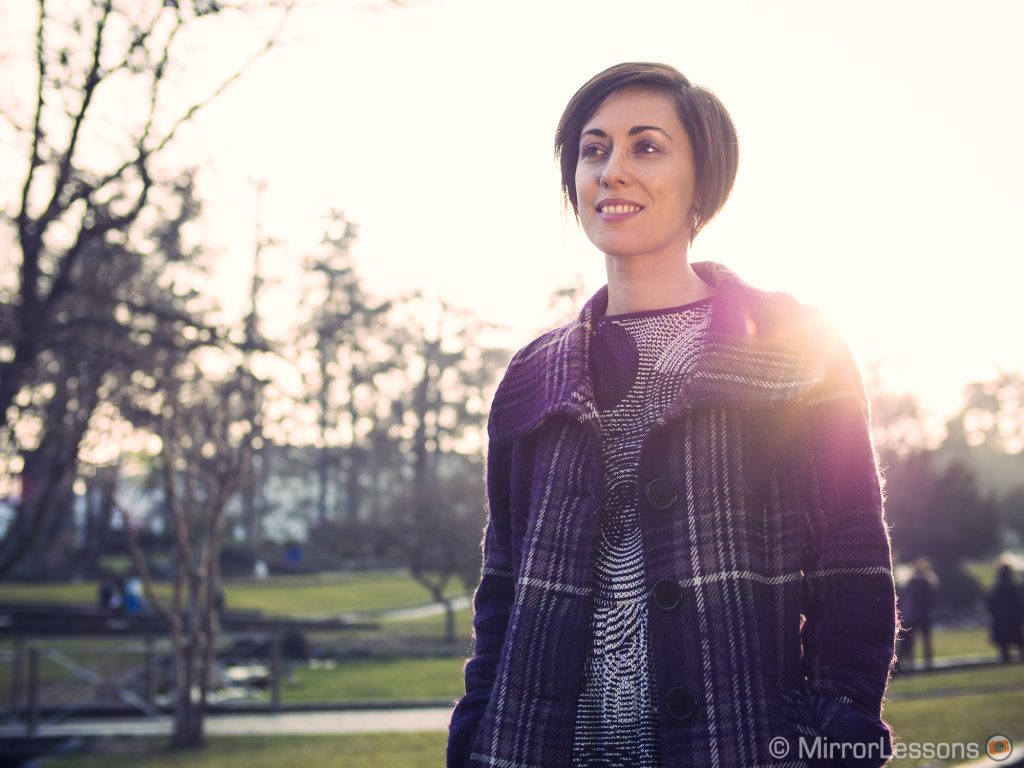
Why choose the Voigtländer Nokton 25mm f/0.95 for portraits:
- unique look when used at 0.95
- distinctive background blur
- solid metal build
To consider:
- soft at the fastest apertures
- too heavy for small MFT bodies
- on the expensive side
Check price of the Voigtländer Nokton 25mm f/0.95 on:
Amazon | Amazon UK | B&H Photo | eBay
The cheapest: Panasonic Lumix 25mm f/1.7 ASPH
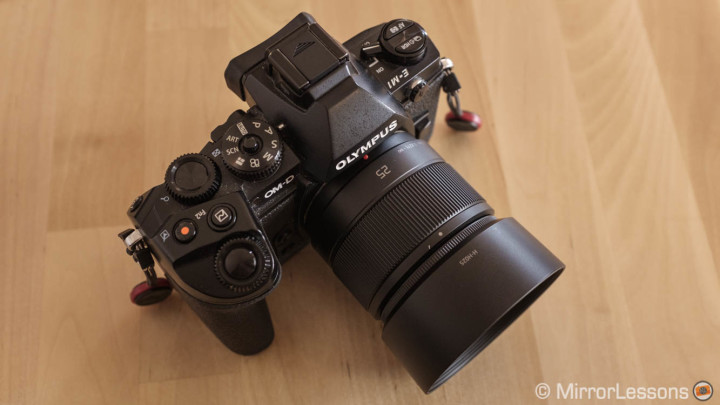
When it comes to affordable 50mm equivalent lenses, it is hard to go wrong with the Lumix 25mm f/1.7. It was already cheap at launch, with a retail price of approximately $250, but can currently be found for $100 less than its original price.
But what kind of quality can we expect from a lens that costs so little? As it turns out, sharpness is good straight out of the gate and the performance remains consistent at all aperture values. The bokeh is pleasant enough but more nervous and less smooth than the Leica f/1.4 version. The AF motor is faster however and the lens can focus as close as 25cm. Flare resistance is good, chromatic aberration is well-controlled and vignetting only appears at the fastest apertures.
The lens is compact and lightweight, which is the result of the barrel being made primarily of plastic (with the exception of the metal mount), but it has a more solid feel than its f/1.4 counterpart.
Being a budget lens, it lacks advanced characteristics like weather-sealing and optical stabilisation but this shouldn’t come as a surprise. It does come bundled with a lens hood however which can help reduce veiling flare in strong backlit situations.

Why choose the Panasonic Lumix 25mm f/1.7 ASPH for portraits:
- very affordable price (perfect for beginners)
- good sharpness wide open
- compact
To consider:
- not the nicest bokeh
- plastic construction (but feels solid)
Check price of the Panasonic Lumix 25mm f/1.7 ASPH on:
Amazon | Amazon UK | B&H Photo | eBay
The best deal: Sigma 30mm f/1.4 DC DN

We tested the Sony E-mount version of this lens which is identical to the Micro Four Thirds version except that it provides a field of view equivalent to 45mm instead of 60mm. We immediately fell in love with it for environmental portrait work thanks to its fast 1.4 aperture and creamy background blur.
However the real appeal of this lens is the price: it costs less than the Panasonic Leica lens mentioned above but offers the same bright aperture and similar optical performance in several ways including sharpness. I also really enjoyed the smooth rubberised grip for manual focus work. Granted the field of view is narrower due to the longer focal length but the in case of portraits, this is a small bonus.
The only aspect that lets this lens down is the amount of chromatic aberration present at the fastest apertures – otherwise it is a solid performer.
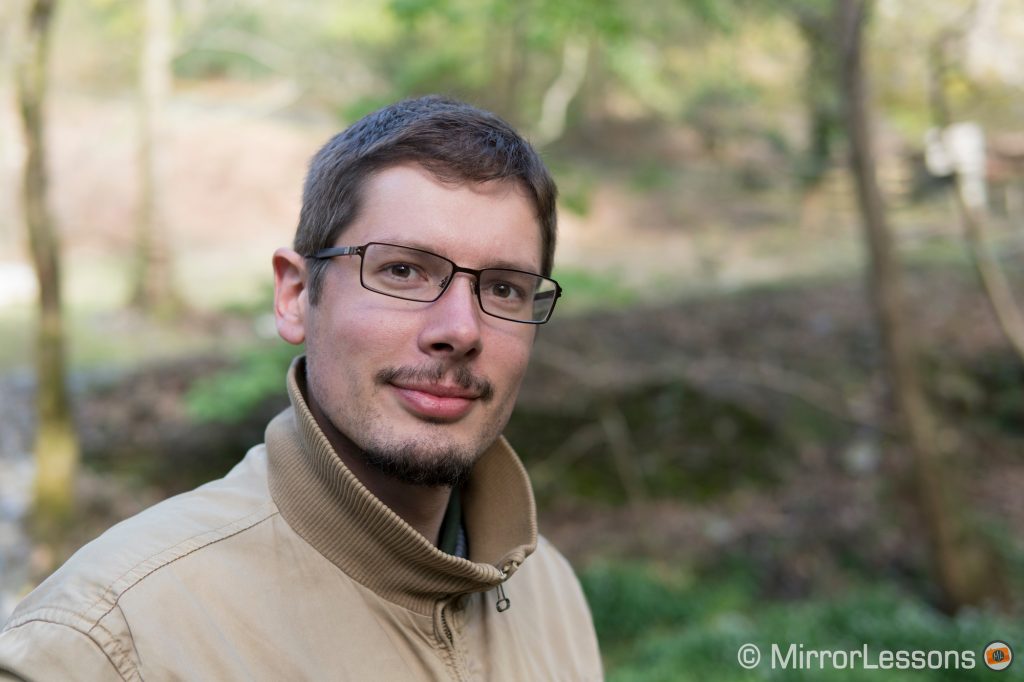
Why choose the Sigma 30mm f/1.4 DC DN for portraits:
- well-priced
- excellent performance from f/1.4
- lovely bokeh
To consider:
- somewhat large for small Micro Four Thirds bodies
- chromatic aberration at the fastest aperture
Check price of the Sigma 30mm f/1.4 DC DN on:
Amazon | Amazon UK | B&H Photo | eBay
The Best Micro Four Thirds Zooms for Portraits
Generally we would not recommend zoom lenses for portraits. Even though some of them offer a decent constant aperture of f/2.8, we feel that a faster prime lens can make more of a difference on the Micro Four Thirds sensor where depth of field is more limited in comparison to a larger sensor.
That being said, if portraiture is not one of your main interests, it may make more sense to purchase a quality “jack of all trades” zoom that can cover a variety of genres. The best kind of zoom would offer a) one or more of the above focal lengths within its range, and b) a fast constant aperture.
As of late 2018, there are three Micro Four Thirds zooms that fit the bill. Let’s have a look at them now.
Olympus M.Zuiko 12-40mm f/2.8 PRO
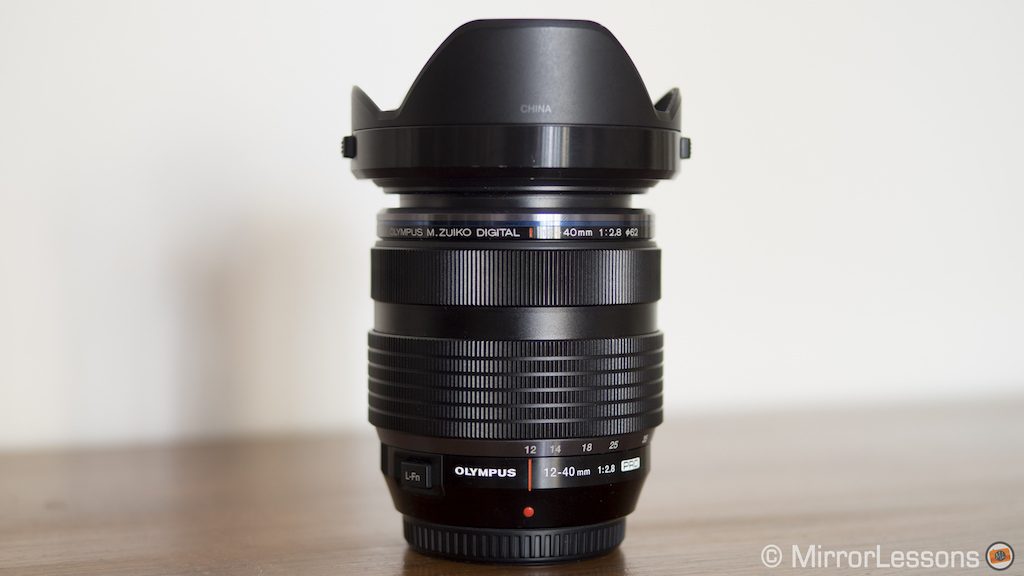
One of the most versatile standard zooms for the system is the M.Zuiko 12-40mm. It has a constant 2.8 aperture which is sufficient for environmental portraits between 25mm and 30mm or upper body portraits if you zoom the lens right out to 40mm. The bokeh is very pleasant and it is easy to switch between AF and MF thanks to the sliding focus ring on the barrel.
Sharpness peaks at f/2.8 which is essential in this case since it is the only value you’ll likely use for this genre. The bokeh balls are not perfectly rounded (especially at the edge of the frame) but at the right distance and with the right background, you can achieve nice results. Vignetting is moderate, chromatic aberration is very well-contained and the lens doesn’t suffer too much from flare. It also has a minimum focus distance of 20cm through the entire zoom range which makes it excellent for close-ups too.
The 12-40mm PRO is fully weather sealed but lacks optical stabilisation, so you’ll want to make sure to use it on a stabilised body if you work in low light.
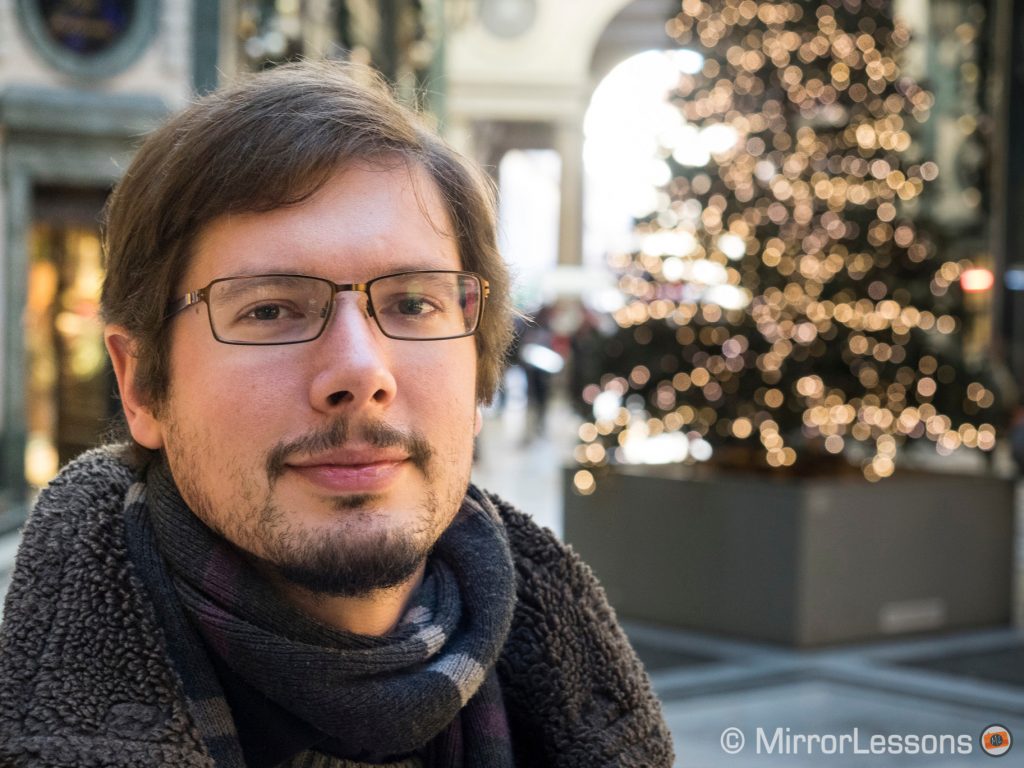
Why choose the Olympus M.Zuiko 12-40mm f/2.8 Pro for portraits:
- excellent sharpness and optical performance
- good subject separation when used at the longest focal length
To consider:
- it’s one of the very best zoom lenses you can buy, but given its price, keep in mind that it’s not just designed for portraits
Check price of the Olympus M.Zuiko 12-40mm f/2.8 Pro on:
Amazon | Amazon UK | B&H Photo | eBay
Panasonic Lumix G 35-100mm f/2.8 (mk I or II)
Another good choice that covers upper body and head shots is the Lumix G 35-100mm f/2.8. Although 105-135mm (equivalent) tends to be the standard telephoto range for portraits, many photographers also like to shoot at the equivalent of 200mm, and this lens makes that possible.
Shot wide open and at the right distance, it will do a good job of isolating your subject while rendering a pleasant bokeh with a swirly effect. At the shortest focal length it can appear more chaotic however. It features optical stabilisation, is weather-sealed and is also very light and compact for this type of zoom.
Note that a mark II version of the zoom has replaced the original but for the purpose of portrait work, either will do just fine since the optical quality is identical. The biggest difference is the improved optical stabilisation of the II version thanks to compatibility with Panasonic’s Dual I.S. II system.
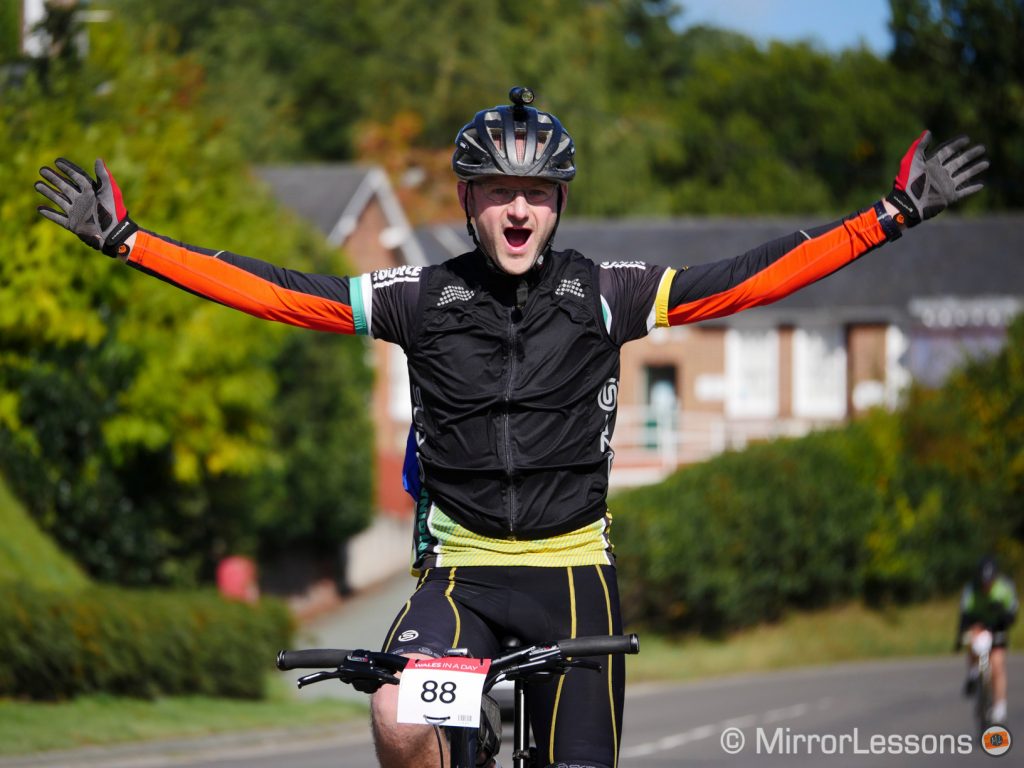
Why choose the Panasonic Lumix G 35-100mm f/2.8 for portraits:
- offers a 200mm equivalent field of view
- good sharpness and distinctive bokeh rendering
To consider:
- the lens can be used for much more than portraits including sports and events
Check price of the Panasonic Lumix G 35-100mm f/2.8 on:
Amazon | Amazon UK | B&H Photo | eBay
Olympus M.Zuiko 40-150mm f/2.8 PRO
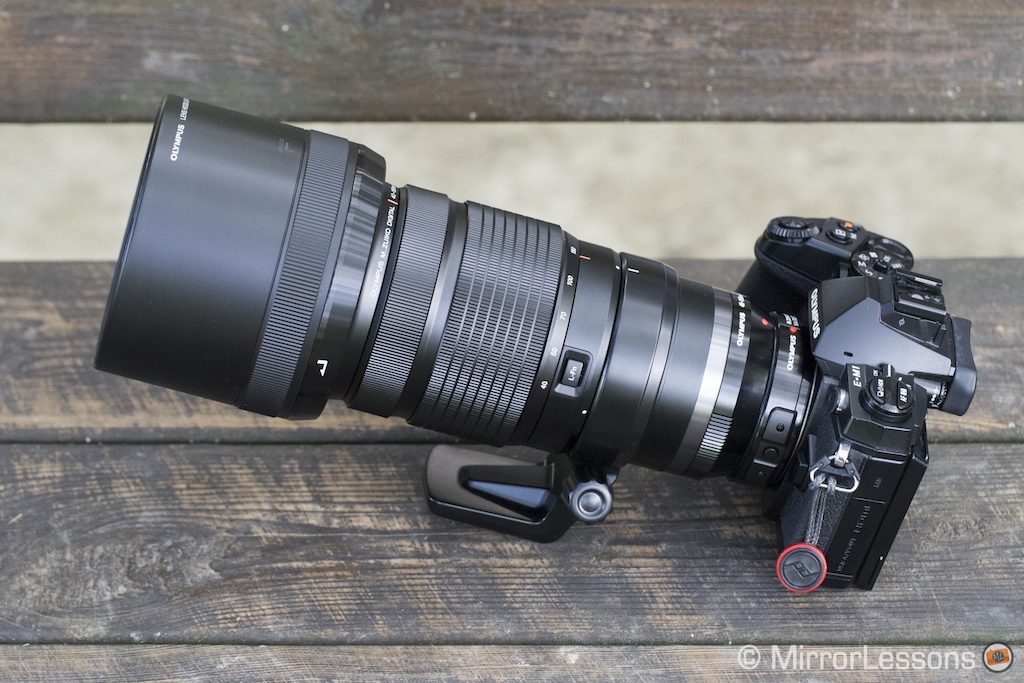
The 40-150mm offers more reach on the telephoto end than the 35-100mm, so I’d only choose this lens for portrait work if I was also interested in wildlife and/or sports (and you can use it with the MC-14 teleconverter too).
Like the 12-40mm, it has a constant 2.8 aperture that guarantees peak sharpness wide open. The bokeh doesn’t isn’t really distinctive but it is uniform with rounded out of focus areas. You can also play more with depth of field and compression thanks to the longest focal lengths. Another interesting aspect is the minimum focus distance of 70cm across the entire zoom range which allows you to take close-ups of the eyes of your subject.
The construction is premium with full weather-sealing but there is no optical stabilisation. It is also much larger and more expensive than most of the lenses listed here.
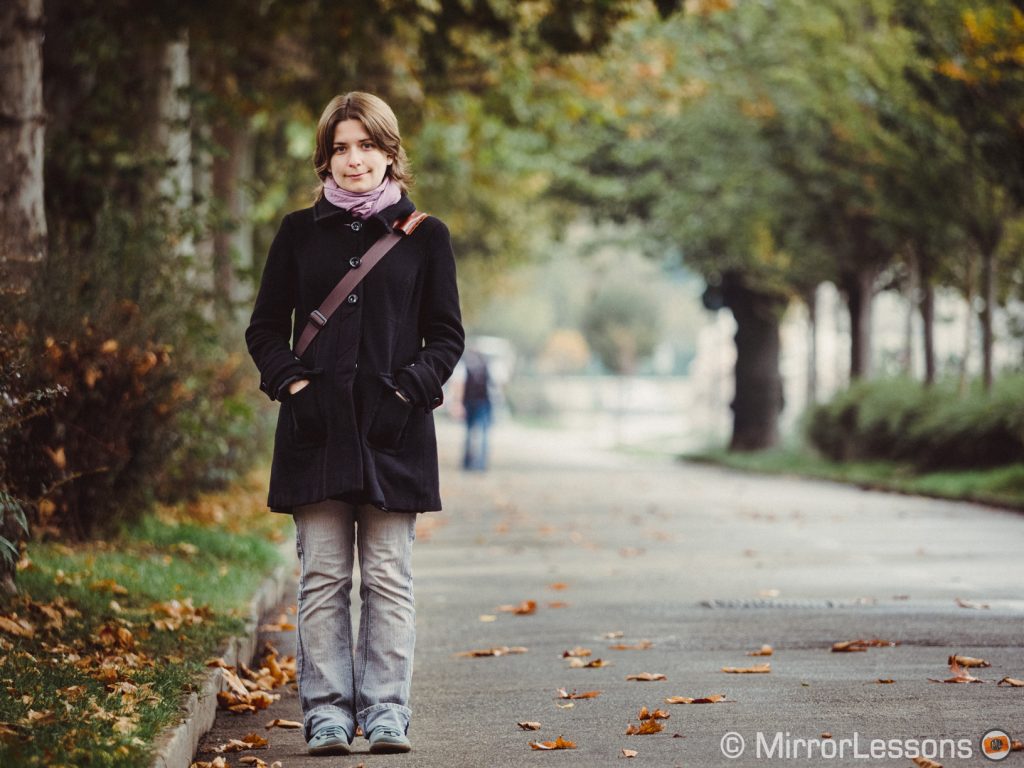
Why consider the Olympus M.Zuiko 40-150mm f/2.8 PRO for portraits:
- excellent optical performance
- very fast AF motor
- good subject separation when used at long focal lengths
To consider:
- it is a large and expensive telephoto lens designed for many purposes besides portraiture
Check price of the Olympus M.Zuiko 40-150mm f/2.8 PRO on:
Amazon | Amazon UK | B&H Photo | eBay
Excluded or yet to be tested lenses
The Micro Four Thirds lens catalogue is vast and while we’ve tested most of the lenses available, we haven’t had the chance to try them all. We’ve also excluded some products we think aren’t really worth the investment.
- 7artisans 55mm f/1.4: in the realm of cheap lenses, it’s hard to find better than the 55mm f1.4 which can be purchased for around $100. We haven’t tested it yet but given the price, it definitely deserves a chance. Thanks to Adam for his feedback about this lens (see the comments below).
- Kamlan 50mm f/1.1: the fast aperture of f/1.1 at an affordable price sounds very tempting. This lens is the latest of a growing series of super fast an affordable manual focus lenses for mirrorless cameras and come in a Micro Four Thirds mount too, making it a 100mm equivalent.
- Samyang 35mm f/1.2 ED AS UMC CS: manual focus only without electronic contacts, this lens has been designed for multiple mirrorless mounts and gives you a 70mm equivalent field of view, which becomes interesting for portraits. It is part of the same series as the 50mm f/1.2 which we talked about here but we haven’t had the chance to test the 35mm lens yet. Note that Samyang also has many manual focus lenses designed for full-frame DSLRs that are also available with a Micro Four Thirds mount, but we prefer to concentrate on lenses specifically designed for mirrorless systems.
- Sigma 30mm f/2.8 DC DN: an older lens with excellent sharpness but the slower aperture of f/2.8 is more limiting on a Micro Four Thirds camera, so we wouldn’t recommend it primarily for portraits.
- Olympus M.Zuiko 25mm f/1.8: this lens offers good performance when it comes to sharpness (similar to the 25mm f/1.7) with perhaps a slightly creamier bokeh than the Lumix lens. It is more expensive however and this is why we think the Panasonic 1.7 version is the better deal.
- ZY Optics 24mm f/1.7: we had the chance to test this lens when it became available, but we were disappointed by its sharpness (especially in the corners), very bad flare resistance and the aperture ring which was too close to the mount and annoying to use. If you like manual focus lenses, we think that there are better options out there.
- ZY Optics 25mm f/0.95: this lens isn’t bad when it comes to sharpness and bokeh. Not the best you can find but decent considering the fast aperture and affordable price. Our sample (one of the first I admit) suffered a lot from flare and reflections, and this is why we don’t recommend it. We haven’t tested a more recent copy, so we don’t know if the problem has been resolved.
- Kowa Prominar 25mm f/1.8: another manual focus lens with the 25mm focal length. The aperture isn’t particularly attractive in comparison to the AF lenses and the price is quite high.
Final Thoughts
As we’ve seen, there is no lack of portrait options out there for the Micro Four Thirds mount. But before settling on any of these lenses, it is important to consider the following:
- What kind of portraits do you enjoy shooting?
- How serious are you about the genre?
- And what is your budget?
Die-hard portrait fans may want a single lens dedicated to that purpose alone, whereas those who casually enjoy portraiture may prefer a prime or zoom that covers two or more genres.
For beginners, something small and inexpensive would be the most logical choice to begin with, whereas professionals who shoot portraits every day should go straight for the best the mount has to offer.
Whichever lens you choose in the end, we’d love to hear about it in the comments section below!
Micro Four Thirds lens comparisons
Below is a list of complete comparison articles between various micro four thirds lenses suitable for portrait work:
- Sigma 56mm f1.4 vs Olympus 75mm f1.8
- Olympus 45mm f1.2 Pro vs 45mm f1.8
- Olympus 75mm f1.8 vs 45mm f1.8
- Olympus 25mm f1.2 Pro vs Leica DG 25mm f1.4
- Olympus 45mm 1.8 vs Noctricon 42.5mm f1.2 vs Nokton 42.5mm f0.95 vs Lumix 42.5mm f1.7
- Olympus 75mm f1.8 vs 60mm f2.8 Macro
- Olympus 75mm f1.8 vs Lumix 35-100mm f2.8
- Leica DG 25mm f1.4 vs Lumix 25mm f1.7

